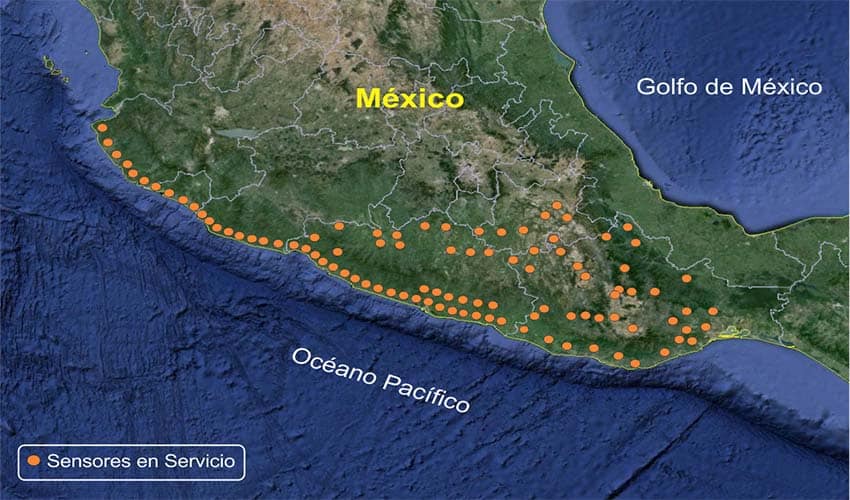Residents of areas at risk of earthquakes will receive seismic activity alerts by text message in 2023, authorities announced on Thursday.
Laura Velázquez Alzúa, head of the National Coordination of Civil Protection (CNPC), explained during President López Obrador’s morning press conference that the CNPC has been working on the technology for the new alert system since 2019.
It builds on an existing system that alerts residents of Mexico City and other central regions about earthquakes occurring on the west coast, Mexico’s region of greatest seismic activity. Given that radio waves travel faster than seismic waves, this can give residents of Mexico City around 40 seconds to prepare before an earthquake hits, potentially saving lives.
“Warnings are received through radio receivers here in Mexico City with C5 loudspeakers, which is also the most useful because it alerts the largest number of people,” Velázquez said. “Since 1993, alerts are also made via commercial AM and FM radio and television, and by 2023 it will be through cell phones.”

Velázquez also announced that the alert system will be extended to the state of Colima during 2023 and 2024.
Colima is one of seven states that the CNPC considers to be at high seismic risk, along with Baja California, Jalisco, Guerrero, Michoacán, Oaxaca and Chiapas. Veracruz, Sonora, Baja California Sur, Nayarit, Mexico City, Puebla, Mexico State, Tlaxcala, Tabasco and Morelos are considered at medium risk.
However, Velázquez emphasized that there were no immediate plans to extend the system to other regions of the country, especially where earthquakes are rare.
“It is completely out of technical consideration to have an alert throughout the country, especially because of the seismic risk in the northwest of the country, which is very low,” she said. “We have to focus on the high-risk areas.”

The Mexican Seismic Alert System (SASMEX) was one of several risk-reduction measures undertaken by the Mexican government after the catastrophic earthquake of September 1985. Between 1991 and 2022, it detected more than 10,500 earthquakes, of which 171 were severe enough to generate seismic alert warnings.
With reports from Sin Embargo and Infobae
